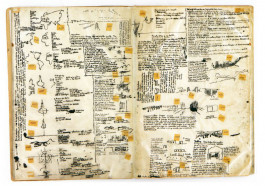On-Drawing South American Extent: Geo-Poetic Mapping Palimpsest in the Travesías de Amereida
Alvaro Mercado, Geoffrey Grulois
Laboratoire LoUIsE
The article analyzes the geo-poetic mapping performed in Travesías de Amereida as a critical practice for understanding and unveiling the various layers that configure the South American territories.
Contemporary urbanization, as a process extended beyond the cities, requires original design practices to contribute to the critical understanding and visualization of the multiple spatial and temporal layers that shape the territories. In this account, this article examines the geo-poetic mapping developed by the Valparaiso School of Architecture, as a radical means of exploring the territories and elaborating their palimpsestic representations. This contribution unfolds the geopoetic vision of the South American continent created in the sixties by the School of Valparaiso, in Chile, as fundamental groundwork to critically question the historic and ongoing urban occupation of territories and their representations following colonization. Besides, it presents the Travesías de Amereida, a collective and situated architectural study performed throughout the vast South American inland, as a unique geo-poetic practice in which freehand mapping becomes an original means of rethinking and redrawing the ever-changing American extent. Through the analysis of drawings made before, during, and after the travesías were undertaken between 1965 and 1985, this article outlines how the geo-poetic vision and mapping practices that embodies iterative freehand drawings combining different temporality, spatiality, and situated experiences—have attempted to unveil the South American continent as a palimpsest: an open extent to trace the ever-changing footprints that reshape its content. To conclude, the article assesses the contribution of situated geo-poetic mapping as a critical design practice to study and visualize the ever-changing, multi-layered, and multi scalar-realities on virtually unknown territories of contemporary urbanization.
Paru dans Urban Planning, Vol 5, No 2 (2020): Territories in Time: Mapping Palimpsest Horizons

Travel-log of Alberto Cruz, Travesía de Amereida, 1965. Source: A. Cruz (1965).
On-Drawing South American Extent: Geo-Poetic Mapping Palimpsest in the Travesías de Amereida
Alvaro Mercado, Geoffrey Grulois
Laboratoire LoUIsE
The article analyzes the geo-poetic mapping performed in Travesías de Amereida as a critical practice for understanding and unveiling the various layers that configure the South American territories.
Contemporary urbanization, as a process extended beyond the cities, requires original design practices to contribute to the critical understanding and visualization of the multiple spatial and temporal layers that shape the territories. In this account, this article examines the geo-poetic mapping developed by the Valparaiso School of Architecture, as a radical means of exploring the territories and elaborating their palimpsestic representations. This contribution unfolds the geopoetic vision of the South American continent created in the sixties by the School of Valparaiso, in Chile, as fundamental groundwork to critically question the historic and ongoing urban occupation of territories and their representations following colonization. Besides, it presents the Travesías de Amereida, a collective and situated architectural study performed throughout the vast South American inland, as a unique geo-poetic practice in which freehand mapping becomes an original means of rethinking and redrawing the ever-changing American extent. Through the analysis of drawings made before, during, and after the travesías were undertaken between 1965 and 1985, this article outlines how the geo-poetic vision and mapping practices that embodies iterative freehand drawings combining different temporality, spatiality, and situated experiences—have attempted to unveil the South American continent as a palimpsest: an open extent to trace the ever-changing footprints that reshape its content. To conclude, the article assesses the contribution of situated geo-poetic mapping as a critical design practice to study and visualize the ever-changing, multi-layered, and multi scalar-realities on virtually unknown territories of contemporary urbanization.
Paru dans Urban Planning, Vol 5, No 2 (2020): Territories in Time: Mapping Palimpsest Horizons

Travel-log of Alberto Cruz, Travesía de Amereida, 1965. Source: A. Cruz (1965).